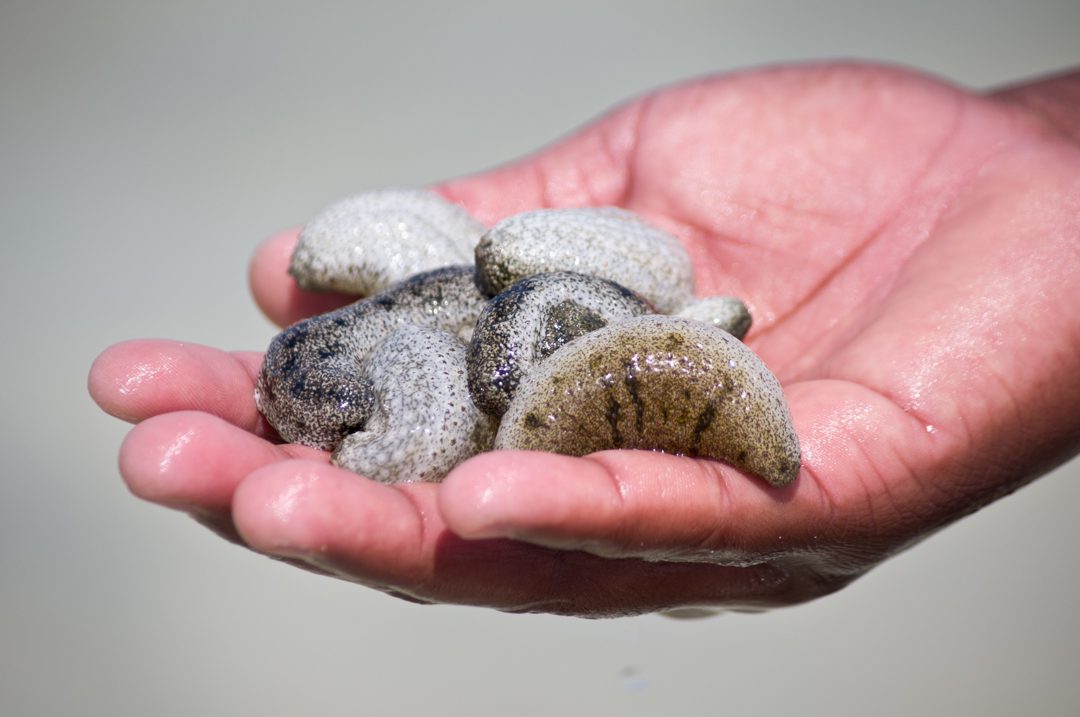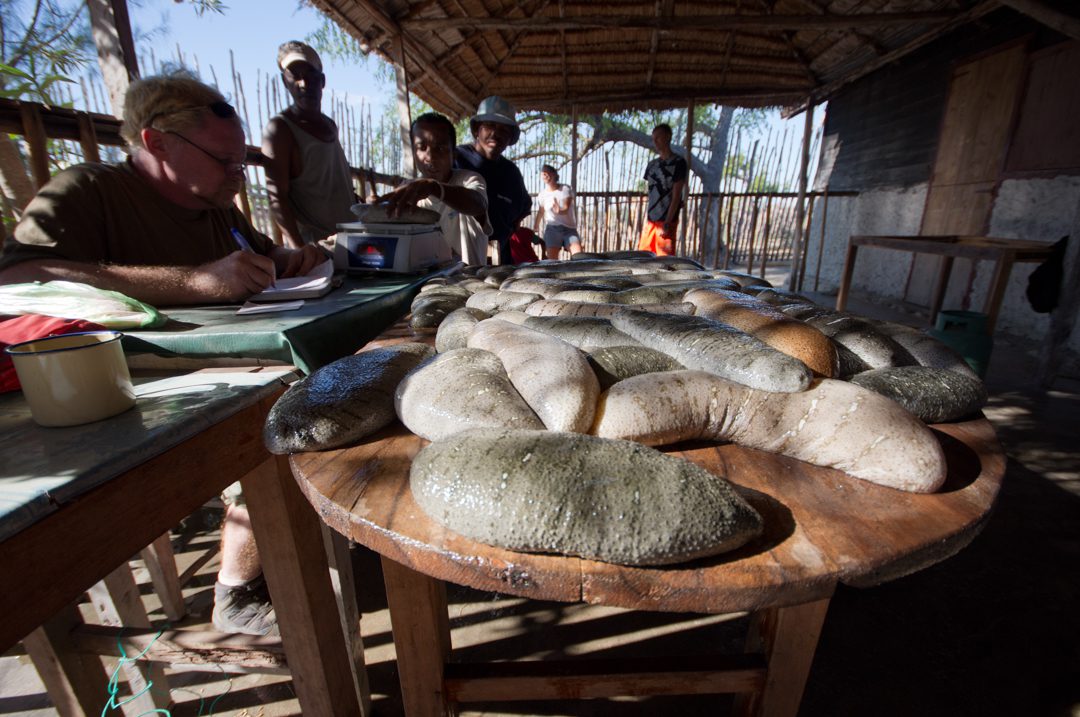By Antoine Rougier, Aquaculture Project Coordinator, Madagascar
The 26th of September was another successful day for the Velondriake Locally Managed Marine Area (LMMA), where Blue Ventures is supporting several local communities to develop village-based aquaculture activities focused on farming sea cucumbers (Holothuria scabra or “Zanga” in Malagasy) and red algae (Kappaphycus alvarezii). This day was particularly eventful, with a delivery of juvenile sea cucumbers for the 12 farming teams in Tampolove, a village located in the south of the Velondriake LMMA.
This was the fourth delivery of 2011. With each delivery consisting of 300 individuals, there are now 1,200 sea cucumbers being raised this year in the Tampolove pens. Net profits from this enterprise are expected to reach 1-1.5 million Ariary (about £300-£500) per team each year. This success, however, depends on farmers working to avoid thefts of adult individuals, and maintaining good juvenile survival rates during the 6 to 10 month growing cycles.

The preparation for a delivery of juveniles is a key element in determining the success of the future survival of young sea cucumbers. Therefore, BV and the farmers put a very strong emphasis on the preparatory work, which includes three key steps:
- Searching for flaws and holes in the nursery pens, which allow juveniles to escape, and predators such as crabs to enter the nursery
- Hunting for crabs, which are the main threat to young ‘zangas’, since one crab can kill, on average, one juvenile per day
- The maintenance and establishment of safety nets to cover the top of the nursery and make it impossible for predators to enter or juveniles to escape
These tasks are the main focus of the farmers, supported by the Blue Ventures technicians, the day before the delivery in order to ensure that to this generation of juveniles has the best chance of survival. After all the hard work, the pens were finally ready when the delivery car finally arrived in Tampolove. The juvenile introduction to the pens took place very quickly in order to limit the stress on the young sea cucumbers, which had already spent more than 6 hours in the car on the bumpy tracks leading to Tampolove. As the tide rose, with all the juveniles secure in their nurseries, free of crabs, and covered by a small mesh net, the group finished up with a feeling of great accomplishment and confidence in the future and everyone returned to the village.
But the work is not finished, and Madagascar Holothurie SA, the company that supplies the juveniles for the project, had also come to Tampolove to collect 400 adult sea cucumbers. These adults were to travel back to the hatchery to increase the company’s number of reproductive stock for the future production of juveniles. Staying buried in the sediment most of the day, adult zanga are only collectable during the night. So, at 11pm that night, the Blue Ventures team and the farmers headed back out to the pens, enjoying the low tide to harvest the sea cucumbers over 350 g, the minimum sellable size.

With complete monitoring conducted every month, we were all confident that the 400 “zangas” would be easy to find, and after a few hours of double-checking the weight of the holothurians with the farmers, we were all on our way back to the village for the sale. In this particular case of live sea cucumbers sales, the work is a race against time to make sure the holothurians don’t spend too much time out of the water, and are quickly secured in a plastic bag full of water and pressurized air.
A good collaboration with the BV team and the farmers helped to finalise this work quickly and efficiently, and at 5am, everybody went home for a well-deserved rest while the 423 sea cucumbers collected that night were on their way to the hatchery in Tulear. A phone call to our partner informed us that all the sea cucumbers arrived safely to their destination, allowing the farmers to celebrate the extra income earned from the sale. The team was excited to help realise another success for aquaculture development in the area, and everybody was proud of working together to make Tampolove a leader in and example of successful community-based sea cucumber aquaculture in both Madagascar and the region.

